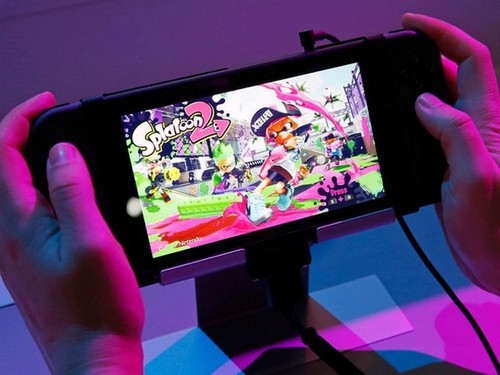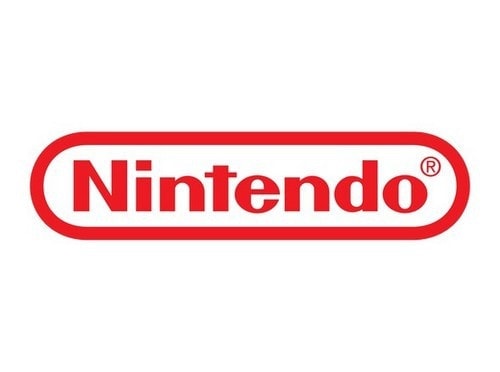The Marketing mix of Nintendo analyses the 4Ps of Nintendo which includes the Product, Price, Place and Promotion of Nintendo. Nintendo Co Ltd is a public company of Japanese origin. It is associated with the IT and Technology industry and deals in consumer electronics. The company was founded in 1889 by its founder Fusajiro Yamauchi. Regarding market capitalization, it is the world’s largest company related to video games. Some of its rival companies are as follows-
- Microsoft Xbox
- Sony PlayStation
- PS4 Station
About Nintendo
- Type: Japanese multinational video game company
- Industry: Video game development, publishing, and distribution
- Founded: September 23, 1889, in Kyoto, Japan
- Founders: Fusajiro Yamauchi
- Headquarters: 11-1 Kamitoba Hokodatecho, Minami-ku, Kyoto, Japan
- Area served: Worldwide
- Current CEO: Shuntaro Furukawa
- Number of employees: 6,700
- Major products: Video game consoles, handheld game consoles, video games, and related merchandise
Table of Contents
Nintendo Product Strategy
Nintendo is a video game and consumer electronics company and has the distinction of creating some of the world’s most popular video game industry in-game franchises. It started its operations with playing cards and, with time, has diversified its operations to include various other innovations. Its product kitty includes
Toys and cards
- Amiibo
- Ultra Machine, Power Lift, Time Shock, Mach Rider, Poem Cards, Jet Launcher, Light Telephone LT, Challenge Dice, Ultra Machine and Beehive Game
Home consoles
- Wii- the Legend of Zelda, Super Paper Mario
- Wii U- Lego City Undercover, Wii Street U
- GameCube- Star Fox Adventures, Mario Party 4, Luigi’s Mission, Super Smash Bros Melee, Doshin the Giant
- Nintendo 64- Super Mario 64, Wave Race 64, Star Fox 64, Mischief Makers, Diddy Kong Racing
- Super Nintendo Entertainment System & Super Famicom- Super Mario, SimCity, Mario Paint, Super Tennis, The Legend of Zelda, Super Play Action Football, Mario and Wario, Metal Combat: Falcon’s Revenge, NHL Stanley Cup
- Nintendo Entertainment System- Donkey Kong, Mario Bros, Popeye, Mahjong, Donkey Kong Jr
- Color TV Game 6, Colour TV Block Kusure, Colour TV Game 15, Colour TV Racing 112
Arcade
- VS System- VS Pinball, VS ladies Golf, VS Soccer, VS Volleyball, VS Gumshoe, VS Wild Gunman, VS Raid On Bungeling Bay
- PlayChoice- 10
Handhelds
- Nintendo 3DS, Nintendo 3DS XL, Nintendo 2DS, New Nintendo 2DS XL
- Nintendo DS, Nintendo DS Lite, Nintendo DSI, Nintendo DSi XL
- Pokemon Mini
- Game Boy Advance
- Virtual Boy
- Game Boy, Game Boy Color, Game Boy Advance, Game Boy Micro
- Game and Watch- Silver series, Multi-screen Series, Crystal Series, Micro Vs Series, Tabletop Series
Nintendo Switch
- Arms, Kirby Star Allies, Bayonetta 2
Home Console Systems
- Game Boy Color Games
Handheld systems
- Turtle Bridge, Oil Panic
Mobile Devices
- Super Mario Run
Web Devices
- Chick Chick Boom
The product mix of Nintendo in 2023 is as follows (Source)
- Consoles: Nintendo Switch: A hybrid console that can be used as both a home console and a portable device. Its unique feature is the detachable Joy-Con controllers. Nintendo Switch Lite: A more compact Switch version designed solely for handheld play.
- Games: Popular franchises like Mario, The Legend of Zelda, and Pokémon have numerous titles under their belt for various Nintendo consoles. Animal Crossing: New Horizons, which gained immense popularity, especially during the COVID-19 pandemic, Splatoon is a unique take on the shooter genre, focusing on inking territory rather than combat.
- Mobile Games: Super Mario Run, Mario Kart Tour, and Animal Crossing: Pocket Camp are examples of Nintendo’s foray into mobile gaming.
- Merchandise: Amiibo: Figures and cards that use near-field communication (NFC) to interact with supported video game software, allowing for data transfer between the toys and games; licensed merchandise, including clothing, accessories, and toys featuring Nintendo characters.
- Online Services: Nintendo Switch Online: A subscription service offering online play and access to a library of classic NES and SNES games. Expansion Packs for games like Animal Crossing: New Horizons provide additional content for a fee.
- Collaborations and Theme Parks: Partnerships with companies like LEGO for Mario-themed LEGO sets; Super Nintendo World is a theme park area at Universal Studios Japan, with more locations planned globally.
- Historical Products: Legacy consoles like the NES, SNES, Nintendo 64, GameCube, and various Game Boy and Nintendo DS iterations.
- Experimental and Niche Products: Labo: A series of interactive make-and-play experiences that combine DIY cardboard creations with the Nintendo Switch, Ring Fit Adventure: A fitness-focused game with a physical ring accessory and leg strap.
This list encapsulates Nintendo’s diverse range of products and services, contributing to its strong presence in the gaming industry.
Nintendo Place Strategy
Nintendo is one of the most influential and successful video game companies, with a product presence in most parts of the world. Its headquarters is in Kyoto, Japan, with an American headquarters in Redmond in Washington and a European base in Frankfurt, Germany.
The company’s Australian subsidiary is based in Melbourne and handles operations in Australia, Oceania, and New Zealand. Nintendo has a highly developed R&D department focusing on innovative products. Its facilities are in Europe, France, the United States, and Japan.
Nintendo has built a robust and widespread distribution channel across different parts of the world to make its products quickly and conveniently available in the consumer market. Their physical distribution network includes product availability in gaming stores, shopping malls, hypermarkets, and electrical retail outlets.
The company also offers an online distribution facility for several shopping e-portals from where products can be purchased. Some portals facilitate reselling used products for people who cannot buy them at their actual prices.
Nintendo’s place strategy is as follows:
- Nintendo utilizes both online and physical retail channels, selling its products through its online store and major retailers like Walmart, Best Buy, and Amazon.
- They have a solid global presence, with their products being available in numerous countries across North America, Europe, Asia, and other regions, catering to a broad international audience.
- Nintendo also partners with various distributors and third-party retailers worldwide to ensure the widespread availability of their products.
- Specialized Nintendo stores, such as the Nintendo New York store, offer exclusive merchandise and serve as retail spaces and marketing tools for brand engagement.
- The company relies on digital distribution platforms, particularly the Nintendo eShop, to sell digital games, downloadable content, and online subscriptions.
Nintendo Pricing Strategy
Nintendo is ranked third as the most valuable company in Japan, with a market value of 85 billion dollars. In 2018, it posted its revenues and net income at 1.056 trillion Yen and 139.590 billion Yen, respectively.
A lot of thinking and planning is required behind the pricing strategy of the gaming consoles and products. This is a technological market, and the company has to consider several factors before determining its correct price value so that the customers can easily afford it. Customer loyalty to the brand cannot be taken for granted because customers always go for the most in-demand game.
Nintendo has kept a diversified pricing and marketing strategy throughout the life cycle of a particular product. During the first phase, the launching period, the product has a new user experience and new technology. Hence, the company adopts a premium pricing range and helps the brand earn good and fast profits if the item succeeds.
Later, when the product becomes established in the consumer market, the company adopts a competitive pricing policy to keep up with rival brands. Nintendo adopts a promotional pricing strategy as the products go into a declining stage. The company offers additional benefits, discounts, and other incentives as part of its promotional pricing strategy to push product sales a bit higher because it has reached the bargaining stage.
Nintendo’s pricing strategy reflects a blend of value-based and competitive pricing approaches, skillfully balanced to maximize market penetration while sustaining brand value. Here’s an insightful look into their strategy:
- Value-Based Pricing for Hardware: Nintendo prices its consoles, like the Nintendo Switch, by considering the unique value they offer consumers, such as hybrid functionality and exclusive game titles. This approach sets them apart from competitors, justifying their price points through the distinctive experiences they provide.
- Premium Pricing for Flagship Titles: For flagship game franchises like Mario, Zelda, and Pokémon, Nintendo often adopts a premium pricing strategy. These games rarely see significant price drops, maintaining their value over time, which is a testament to their enduring popularity and quality.
- Competitive Pricing for Entry-Level Products: In contrast, Nintendo adopts more competitive pricing for products aimed at broader markets, like the Nintendo Switch Lite. This strategy makes their products accessible to a broader audience, fostering inclusivity and market growth.
- Dynamic Pricing for Digital Content: On the Nintendo eShop, the company employs dynamic pricing, with frequent sales and promotions for digital games and DLC. This approach drives sales and keeps the platform attractive and engaging for users.
- Strategic Bundle Pricing: Nintendo often bundles consoles with popular games or accessories, offering these at a slightly reduced combined price. This enhances perceived value and encourages the uptake of new consoles and games, effectively boosting sales.
- Leveraging Nostalgia with Retro Pricing: For their classic game re-releases and retro consoles like the NES and SNES Classic Editions, Nintendo capitalizes on nostalgia, often pricing these items slightly above what might be expected for older content, tapping into the sentimental value these games hold for fans.
In summary, Nintendo’s pricing strategy is a sophisticated mix of maintaining brand value, leveraging unique product features, and understanding its diverse customer base, all while keeping a keen eye on market dynamics and competitor actions.
Nintendo Promotion Strategy
Promotional strategy is as important as an innovative product or its correct price range. Nintendo has been lucky as it is an established brand with a huge fan following. The launch of every new product is a promotional event for the company where it can play games online and invites several known personalities to mingle with its game-lover guests. Free goodies, t-shirts, and console cases are distributed to seek positive brand awareness.
Ad campaigns are advertised via newspapers, children’s channels, and prime channels on television, magazines, and billboards. The company uses its website, other portals, and its Facebook page, Twitter, YouTube, and Instagram to promote its products. It also offers incentives and discounts as part of its promotional activities.
Nintendo has taken part in several other marketing strategies and campaigns to establish its position in the consumer market. Its earliest slogan was Now you’re playing with power and was used for marketing the Nintendo Entertainment System. It later introduced other taglines like Super Power, Portable Power, Play it Loud, Take a Look Inside, and Switch and Play. Nintendo is aware of its responsibility towards society.
In 1992, it built Starlight Fun Center Mobile Entertainment units in a tie-up with Starlight Children’s Foundation and installed them in hospitals. It made arcade games serve as a distraction and brighten the mood of children in hospitals. Nintendo has a program where it takes back its old products and recycles or reuses them.
Nintendo’s promotion strategy is as follows:
- Nintendo extensively uses social media, online advertising, and its official website to promote new releases and updates, capitalizing on the digital landscape to reach a broad, tech-savvy audience.
- They collaborate with influencers and gaming communities for product endorsements and reviews, leveraging the power of word-of-mouth in the gaming industry.
- Special events, gaming conventions, and experiential marketing, such as interactive exhibits at theme parks and pop-up experiences, are utilized to create immersive brand engagements and showcase their latest offerings.
Some Recent Video ads and Print ads of Nintendo are:
https://youtu.be/8RngAaAhdmk
Liked this post? Check out the complete series on Marketing Mix


ok boomer
in your note about previous consloes on the gamcube you put Luigi’s Mission, thats wrong its called Luigis Mansion
not gonna lie if you got that wrong kinda a boomer moment
ok boomer